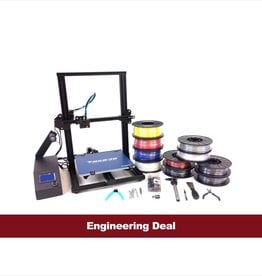Fused Deposition Modeling Filaments
Engineering Deal Filaments Highlighted in Maroon
Click here to download the PDF!
ABS - Acrylonitrile Butadiene Styrene
|
|
ASA - Acrylonitrile Styrene Acrylate
|
|
HIPS - High Impact Polystyrene
|
|
PETG - Polyethylene Terephthalate (Glycol)
|
|
PETG - Carbon Fiber PETG
|
|
PLA - Polylactic Acid
|
|
PLA - High Heat PLA
|
|
PLA - Composite Brass, Bronze, Copper PLA
|
|
PLA - Composite Carbon Fiber PLA
|
|
PLA - Composite Stainless Steel PLA
|
|
PLA - Composite Wood Fill PLA
|
|
PVA - Polyvinyl Alcohol
|
|
TPU - Thermoplastic Polyurethane
|
|


